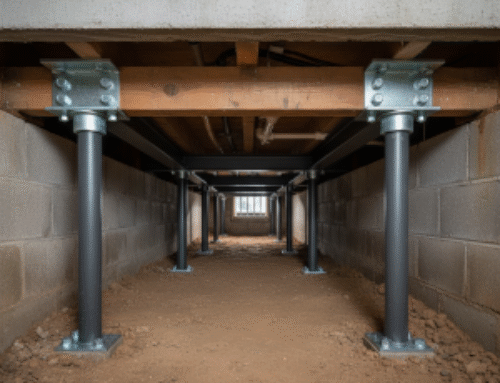You walk into your basement and notice cracks zigzagging across the floor, or maybe you trip slightly on a slope that wasn’t there before.
An uneven basement floor may look like a minor annoyance, but it can be a red flag for bigger issues — from soil settlement and moisture intrusion to foundation movement.
Left unchecked, these problems can compromise your home’s structure and safety.
The good news?
There are proven solutions to restore your basement floor and protect your investment.
Signs You Need to Fix an Uneven Basement Floor
Visible Cracks or Separations in the Floor
Small hairline cracks are normal in concrete, but wide cracks, jagged separations, or cracks that continue to grow signal something more serious. These usually indicate soil settlement or shifting beneath the slab.
Sloping or Uneven Spots
If furniture doesn’t sit level or you feel like you’re walking uphill or downhill in certain areas, that slope is a strong indicator your slab is settling unevenly. Even slight tilts can get worse if left untreated.
Gaps Between the Floor and Baseboards/Walls
When the slab sinks, it may pull away from the surrounding walls, leaving noticeable spaces along the edges. These gaps not only look unsightly but can also allow pests and moisture to creep in.
Water Pooling or Poor Drainage Patterns
Water should naturally flow toward drains. If puddles collect in certain areas after a storm or basement cleaning, the floor may be sinking, creating low points that trap moisture. This often leads to mold or mildew growth.
Causes of Uneven Basement Floors
A basement floor doesn’t just crack or sink without a reason. Usually, something is happening beneath the surface that weakens its support.
Here are the most common causes:
Soil Settlement Under the Slab
Over time, the soil that supports your basement slab can compress or shift. This creates voids beneath the concrete, leaving sections of the floor without enough support. As a result, parts of the slab sink or crack.
Poor Drainage or Water Damage
Water is one of the biggest threats to concrete. If groundwater, leaking pipes, or poor drainage systems saturate the soil under your basement, that soil can erode or soften. Without solid support, the slab begins to dip and pull apart.
Improperly Compacted Soil During Construction
When homes are built, soil beneath the foundation should be tightly packed. If builders skip this step or rush the process, the loose soil will settle unevenly over time, causing the slab above to sink or tilt.
Foundation Movement or Shifting
If your home’s main foundation shifts due to unstable soil or external pressure, that movement can transfer stress to your basement floor. This leads to large cracks, uneven spots, and gaps between the floor and walls.
Expansive Soils
Some soils — particularly clay-rich ones — expand when they absorb water and shrink as they dry out. This constant swelling and shrinking pushes and pulls on the slab, creating cracks and uneven surfaces.
Common Methods for Raising an Uneven Basement Concrete Floor
1. Self-Leveling Compounds
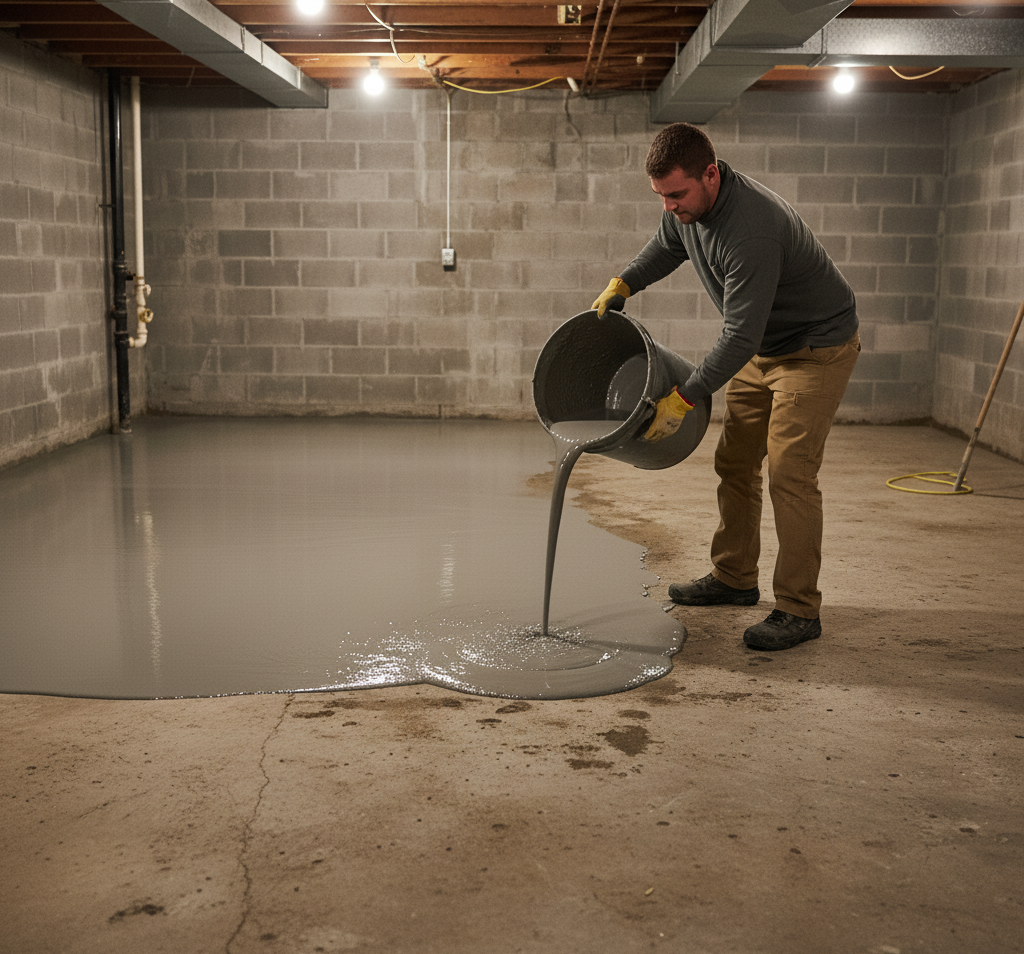
For minor uneven spots or surface-level dips, self-leveling compounds can be applied directly to the floor. These are cement-based products that flow into low areas, harden quickly, and create a smooth, even surface.
While affordable and fast, this is typically a cosmetic fix best for small problem areas, not a solution for deeper settlement issues.
2. Mudjacking
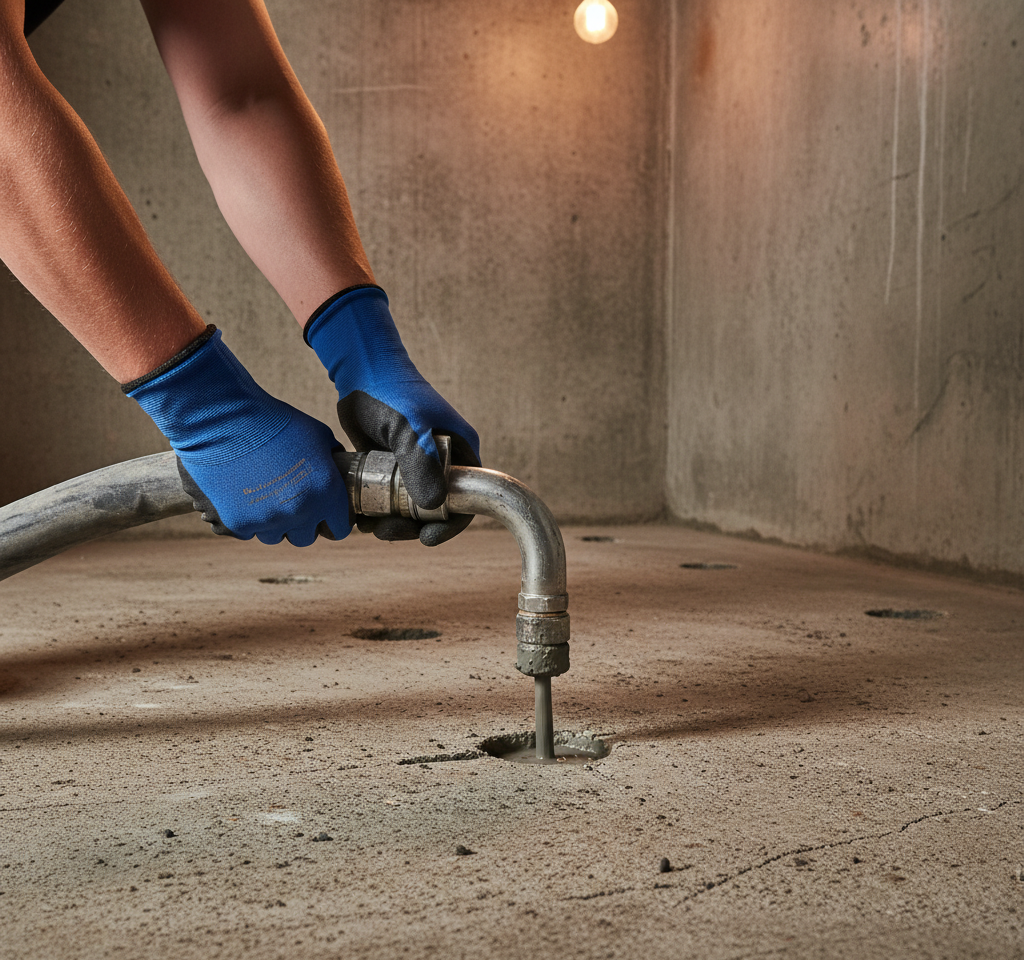
Mudjacking involves drilling small holes in the slab and pumping a cement slurry mixture underneath it. As the slurry fills voids in the soil, it pushes the slab back up into place.
Mudjacking has been around for decades and is still used in some cases, but it has drawbacks — the material is heavy and can sink again over time, and the repair may not last as long as modern alternatives.
3. Polyurethane Foam Injection (Polyjacking)
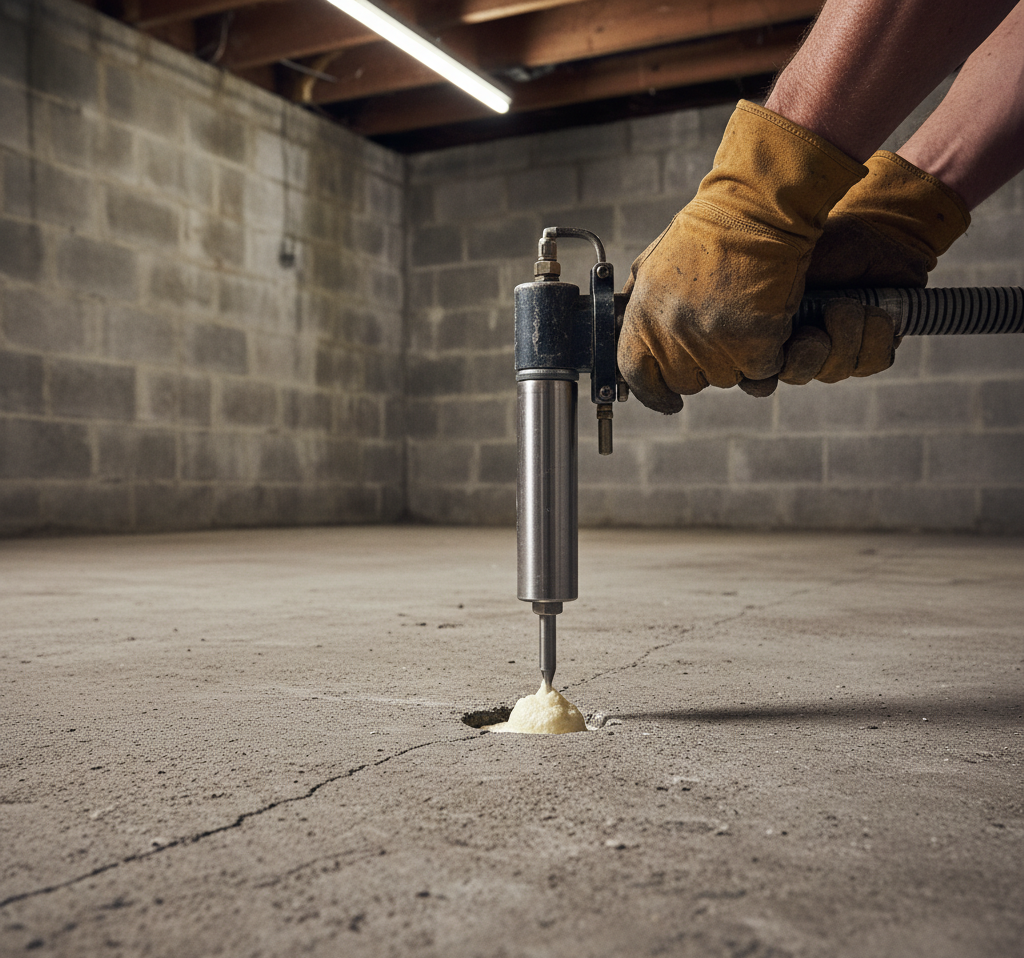
A newer and more advanced option, polyjacking uses expanding polyurethane foam injected beneath the slab. The foam expands to fill gaps, stabilizes the soil, and lifts the floor back into position.
It’s lightweight, minimally invasive, and cures quickly, allowing homeowners to use the basement again within hours. This method is considered one of the most durable and long-lasting solutions.
4. Slab Replacement
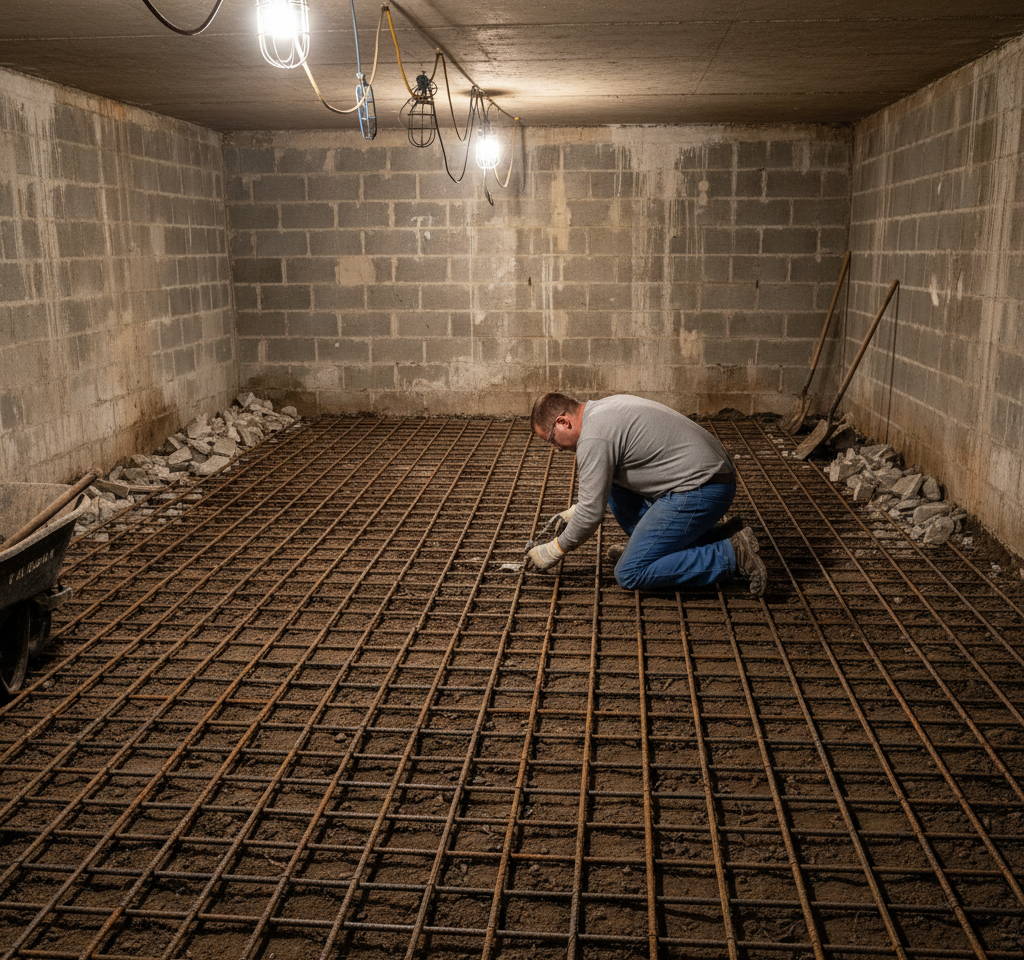
In severe cases where the concrete is extensively cracked, crumbling, or structurally unsound, slab replacement may be the only viable option.
This involves breaking out the old floor, addressing the underlying soil or drainage problems, and pouring a brand-new concrete slab. While more costly and disruptive, replacement ensures a fresh start when repairs aren’t enough.
Why You Shouldn’t Ignore Uneven Basement Floors
Tripping Hazards and Safety Issues
Uneven floors create dangerous walking conditions. Children, older adults, or anyone carrying laundry or storage boxes can easily trip and fall. A basement should be a safe, usable space, not one that poses a daily risk.
Moisture Intrusion That Can Worsen Cracks
Cracks and gaps in a basement slab give water an entry point. Even small amounts of seepage can lead to mold growth, musty odors, and damaged belongings. Left unchecked, moisture problems can compromise indoor air quality and overall home health.
Potential Foundation Instability
An uneven basement floor often signals movement beneath your home. If soil is settling or shifting, that same movement can affect your foundation walls. This may cause bowing walls, sticking doors, or windows that don’t align — all signs of bigger structural trouble.
Lower Home Value
When buyers see cracked or sloping basement floors, they assume the worst: “foundation problems.” Even if the damage is minor, it can hurt resale value or make it harder to sell your home without costly repairs first.
More Costly Repairs if Delayed
Addressing a small uneven area now is far more affordable than waiting until the entire slab needs replacement or until foundation walls are compromised.
Problems don’t fix themselves — they compound over time, raising both concrete leveling repair costs and disruption.
Frequently Asked Questions
Get Your Basement Back on Solid Ground
An uneven basement floor isn’t just an inconvenience — it’s often a warning sign of bigger issues lurking beneath your home. The sooner you address it, the easier and more affordable the repair.
Bluegrass Foundation Repair specializes in lifting, concrete leveling, and protecting basement floors with proven, long-lasting solutions.
Don’t wait until small cracks become big problems — contact Bluegrass Foundation Repair today for a free inspection and get your basement back on solid ground.

